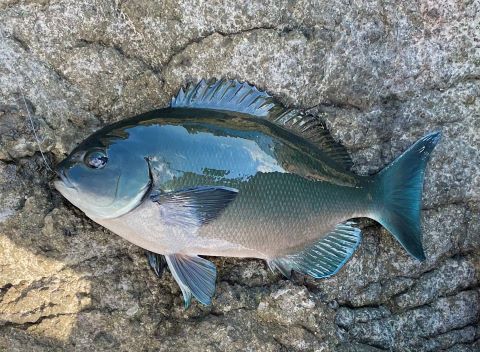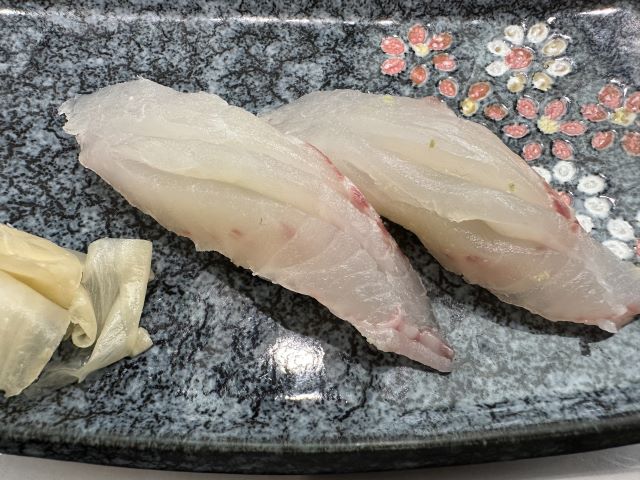
What is Largescale blackfish (Mejina)?
Largescale blackfish (Mejina) is distributed throughout Japan south of southern Hokkaido, Taiwan, and the East China Sea. Its bodies are oval and flattened, and its body color is blackish purple. It is diurnal and forms schools, moving to deeper waters offshore as it grows.
It can grow up to 60 cm in length, but most of those on the market are about 40 cm in length. In summer, it feeds on animal food such as small shrimps, and in winter, it prefers vegetable food such as seaweed and nori, which means that the season is winter, as the fish’s smell of the sea disappears and it becomes fatty during the winter.
The name of this species in the Kansai region is “Gure,” and it is a popular rock-fishing target. Its scientific name is Girella punctata Gray, 1835.
What does Largescale blackfish (Mejina) sushi taste like?

Largescale blackfish (Mejina) looks like red seabream (Tai), but are related to Japanese sea bass (Suzuki). The Kuromejina (Girella leonina (Richardson,1846)) and Okinamejina (Girella mezina Jordan & Starks, 1907) are members of the Mejina family, but the Mejina has the best taste.
It can be served as sashimi, grilled, simmered, or even cooked in a pot. It is relatively easy to cook because it is well suited to cooking methods that use oil. If the gall bladder is accidentally broken, a strong odor can be passed around in the air, which can make it smell even worse. Therefore, it is important to avoid damaging the internal organs when cooking it.
It is inexpensive, but because it is not caught in large numbers, it is not always available at sushi restaurants. Its flesh is a beautiful pale pink color, which is hard to imagine from the black body surface.
In winter, it has a stronger taste than red seabream, with the fat coming in closer to the mouth and a stronger umami. In the summer, it can have a slightly peculiar aroma, so it is best to yubiki (parboil) or broil the fish before serving it as nigiri sushi.
[sc_apply url=”https://sushiuniversity.jp/apply/”]
We hope this information will be helpful.

Revision date: June 12, 2023
Share this article